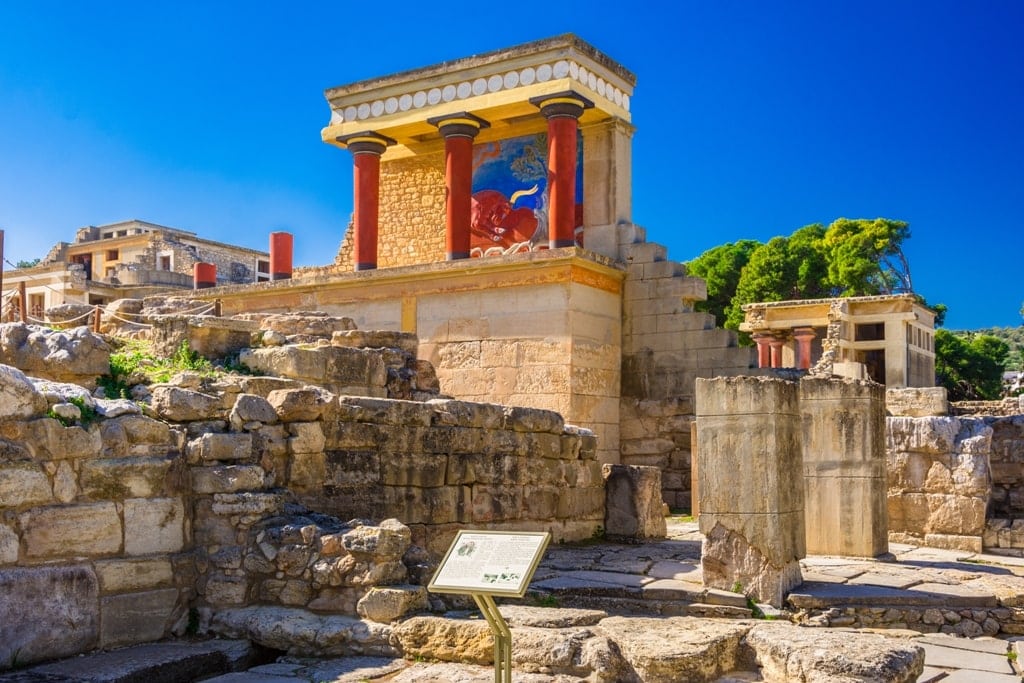
Knossos Palace
Heraklion
Exploring the Marvels of Knossos Palace: Unveiling the Minoan Civilization's Splendor
In the heart of the captivating island of Crete stands a testament to the ancient world's grandeur and sophistication – the awe-inspiring Knossos Palace. Nestled just south of modern-day Heraklion, this archaeological site holds the key to unraveling the mysteries of the Minoan civilization, one of the earliest advanced societies in Europe. The palace's ruins offer a captivating glimpse into a bygone era, where myths intertwined with reality and innovation thrived.
The Origins of Knossos Palace
Dating back over 3,000 years, the Knossos Palace was the epicenter of Minoan culture and political power. The Minoans, named after their legendary King Minos, flourished on the island of Crete from approximately 2700 to 1450 BCE. Their civilization boasted remarkable achievements in various fields, including art, architecture, trade, and governance.
The Palace Complex
Stretching over an impressive area of 20,000 square meters, the Knossos Palace complex consists of several interconnected structures, courtyards, and rooms. The intricate labyrinthine layout of the palace is said to have inspired the myth of the Minotaur and the labyrinth itself.
The palace's design showcases the Minoans' advanced urban planning and architectural prowess. The builders utilized multi-level structures, grand staircases, and decorative elements to create an ambiance of opulence and prestige. Vividly colored frescoes adorned the walls, depicting scenes of religious rituals, daily life, and mythical creatures.
Highlights of Knossos Palace
Among the many intriguing features of Knossos Palace, a few stand out as remarkable highlights. The Throne Room, also known as the "Hall of the Double Axes," is a grand chamber where the king would hold court and receive visitors. The impressive Throne itself, thought to be the seat of King Minos, is carved from stone and decorated with intricate motifs.
The Central Court, located at the heart of the palace, was a bustling hub of activity. Surrounded by pillared porticoes, it hosted various ceremonies, public gatherings, and possibly even sporting events. It's believed that bull-leaping, an ancient Minoan ritual depicted in art, took place in this very space.
Another captivating section of Knossos Palace is the Royal Quarters. These rooms housed the royal family, and their walls were adorned with lavish frescoes showcasing the Minoans' artistic finesse. The famous fresco of the "Prince of the Lilies" and the "Ladies in Blue" are among the stunning masterpieces discovered here, providing insights into Minoan fashion, social hierarchy, and cultural norms.
Unraveling Minoan Civilization
Excavations at Knossos Palace, led by British archaeologist Sir Arthur Evans in the early 20th century, revealed a wealth of artifacts that shed light on Minoan society. The discovery of an extensive archive of clay tablets, known as Linear B tablets, allowed scholars to decipher the Minoan script and gain insights into their language, administration, and economic activities.
Furthermore, the site unearthed evidence of advanced architectural techniques, such as indoor plumbing, advanced drainage systems, and multi-story structures. These remarkable achievements demonstrate the Minoans' innovative mindset and their commitment to creating comfortable and functional spaces.
Visiting Knossos Palace
Today, Knossos Palace stands as a living testament to the ancient Minoan civilization. Visitors from around the world flock to this archaeological site, eager to immerse themselves in the captivating world of the past. Exploring the ruins, walking the same paths as the Minoans, and witnessing the remnants of their remarkable achievements
